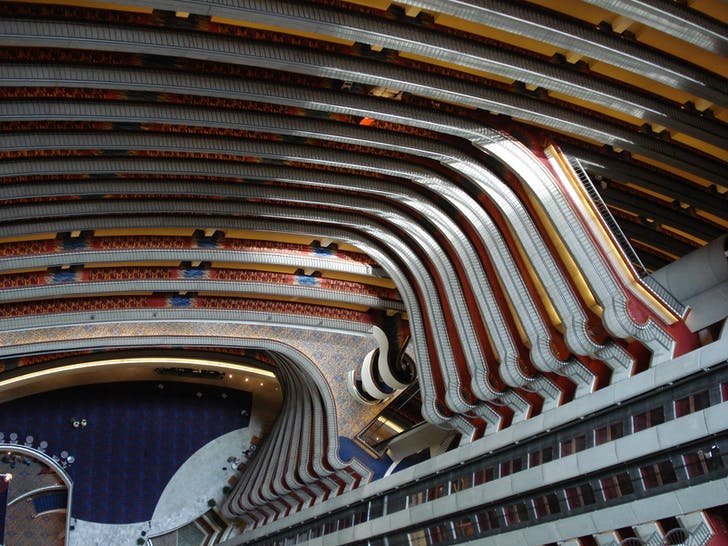
“The science-fiction world of Buck Rogers and the twenty-first century have not left us,” write David Gebhard and Robert Winter in their Architectural Guidebook to Los Angeles. “Five bronze-clad glass towers rise from their podium base, just like one of the 1940s drawings by Frank R. Paul for Amazing Stories.” The work in question is the Westin Bonaventure Hotel, one of the most distinctive-looking structures in a city once known for idiosyncratic architecture. Yet no matter how often they see it, standing as it does on a downtown hill right beside a major freeway, fewer than one in ten thousand Angelenos could name the building, let alone the man who designed it. But to those of us interested in such niche subjects as Los Angeles in film or urban redevelopment in mid-20th-century America, the Bonaventure looms large — larger, indeed, than it does on the ever taller and denser downtown skyline — as does the legacy of its architect, John C. Portman, Jr.
The Bonaventure will look familiar even to those who have never set foot in Los Angeles, provided they watch enough movies. Since opening in 1976 it has appeared onscreen with some frequency, playing a getaway driver’s midnight rendezvous point, the final destination of a scavenger hunt, the site of a political assassination, the first casualty of a massive earthquake. As these roles suggest, the productions that use the Bonaventure tend to be genre pictures, often often unsubtle ones even by that standard (all of which I watched as research for a video essay on the subject). But then, the Bonaventure is an unsubtle building, Buck Rogers in its interior as well as its exterior — both of which appeared, naturally enough, in 1979’s Buck Rogers in the 25th Century, among the very first films to feature either. As well as the Bonaventure would seem to lend itself to such visions of the future, however, most of the films to feature it have been set in contemporary Los Angeles.
Though we haven’t yet reached the 25th century, our year 2020 surely counts as “the future” as anyone in 1976 would have defined it. The real calendar has now officially passed 2019, the year envisioned by Ridley Scott’s Blade Runner, which since it came out in 1982 has stood as the definitive cinematic vision of the Los Angeles to come. Notably for a Los Angeles-set genre picture (albeit an elevated one), its cityscape does not include the Bonaventure: the elements of the real Los Angeles incorporated by Scott and his collaborators tend toward the mundane, like the 2nd Street Tunnel, and even the clichéd, like Union Station and Bradbury Building, a go-to location since the silent era. But Blade Runner presents those locations as no other film had done before, stripping them of any lingering glamor and juxtaposing them against jagged skyscrapers festooned with colossal video screens and street-level warrens glowing with neon Japanese lettering.
Read the whole thing at Archinect.